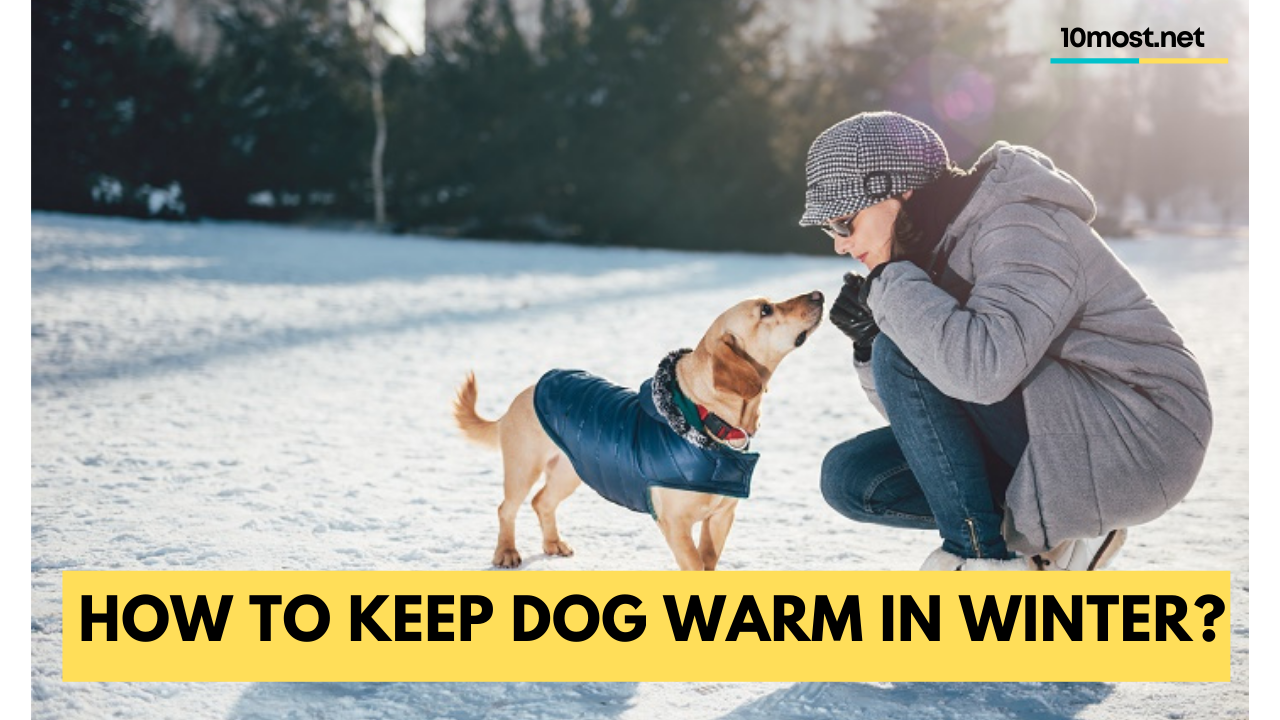How to keep dog warm in winter?
Winter is in full swing, and it is beginning to get cold outside. Our job as pet owners is to make sure that we keep our furry little friends warm so that they don’t suffer when the snow begins to walk around on all fours. We can ensure that they stay warm all winter long by purchasing a coat for them; however, these can be expensive, and some animals feel more at ease without them.
We know it’s well-known that dogs are very good at sensing the emotion of their owners – some might even suggest it is psychic. These trustworthy companions can sense when their owner is worried or scared, and they do everything they can to make them feel better. When you notice your dog is acting fearfully (racing around, barking, hiding), you need to determine if he senses something you don’t; if a person or animal has invaded his space. Suppose a storm is coming (consider natural disasters). Your furry friend may be trying to communicate with you in any number of ways!
The best way for our customers to keep their pets cool during the hot summer months is to make sure they’re drinking plenty of water and playing outside in the sprinklers if possible. And we can also offer some top tips on how to keep your pet warm this winter too!

1. Be sure your dog has a warm shelter
If you’re going to leave your dog outside for any greater portion of time, ensure he has a nice cosy place to keep himself comfortable, whether it’s warm or cold. While an outdoor dog house can be sufficient, we wouldn’t recommend this in the winter because you don’t want him sitting on anywhere near as much snow as possible. For the chilling months, it’s best to invest in an outdoor heated bed or pad.
Some even look like igloo shapes! While products are supposed to be weatherproof and won’t catch fire by placing them outdoors for extended periods, we still recommend checking up on them every so often to make sure they’re doing okay.
A “Dog Tent” is a great alternative if looking for something light and portable. When using it, make sure that it’s not windy or snowy so that the dog house won’t blow away.
2. Keep your dog hydrated
Seasonal changes and even weather can play havoc with your dog’s overall well-being.1 You see, while they tend to pant a lot when it’s hot and humid outside, dogs still lose water through normal bodily function, like urinating and excreting wastes.
And on top of all of this, most typically have little hair to protect them from the cold, so to keep from becoming dehydrated, provide fresh water at all times throughout the year. A Thermal Bowl will keep your dog’s water bowl from freezing over so that she always has access to water no matter how cold or hot it may get outside.
3. Don’t go overboard with grooming
Your dog’s skin needs gentle cleansing and moisturizing while they’re enduring cold, dry weather.3, according to an American Kennel Club article, letting your pet’s hair grow long in the winter will help them keep their bodies warm after it’s sheared during warmer months.4 However, don’t forget to cut back on the humidity, or your dog may be at risk for ear mites.5
4. Bundle your dog up
If you have a dog who has very little coat or fur, he may need to wear a sweater to stay warm outdoors, especially if it’s cold outside. Make sure the sweater fully covers his stomach area and goes from the base of their tail up to their neck. That said, even dogs with thick coats can get hypothermia so, if your dog is showing any symptoms of this condition, consult a veterinarian right away!
- Shivering
- Cold ears and feet
- Rapid breathing
- Increase in urination
- Hair standing on ends
5. Protect your dog’s feet
If it’s raining or snowing outside, consider getting the dog boots in advance to prevent the paws from getting wet. You should also make sure to rub that petroleum jelly on his feet to prevent harsh chemicals or ice cubes from irritating him.
6. Dry your dog off when they come inside
While some dogs dry themselves off better than others, your dog will be much more comfortable if you help her out. Wipe her down with a towel and remove the clumps of snow and ice, so she isn’t gnawing at her fur obsessively trying to get it off.
Look under her collar for any snow, salt, or de-icing chemicals that might have snuck in there somehow – your furry pal doesn’t deserve to bite the dust due to these hazards! After she’s dry, an indoor heated dog bed will keep her warm and cosy throughout the night!

7. Feed your dog more
If your dog spends a lot of time outdoors in the wintertime or has jobs outside, consider feeding him a little more throughout winter. Your dog’s body works harder to stay warm, so the additional calories help his body not fall victim to the cold temperatures and brisk, freezing winds.
8. Don’t leave your dog in the car
The summer months are hot, humid, and sometimes uncomfortable. Despite that, they’re hazardous to dogs in a way similar to the dog days of August. Cars are among the main culprits when it comes to stuffiness, so be aware that your vehicle could potentially put your dog at risk for the same symptoms as heat stroke, seizures, vomiting and more.
While walking – or sprinting! – through this winter wonderland may seem like a great idea at first, wind-chills aren’t necessarily pleasurable for both you and your dog. So bundle yourselves up! And don’t forget you come first.
2. Why do dogs Lay on your feet? (Top 3 Reasons)

